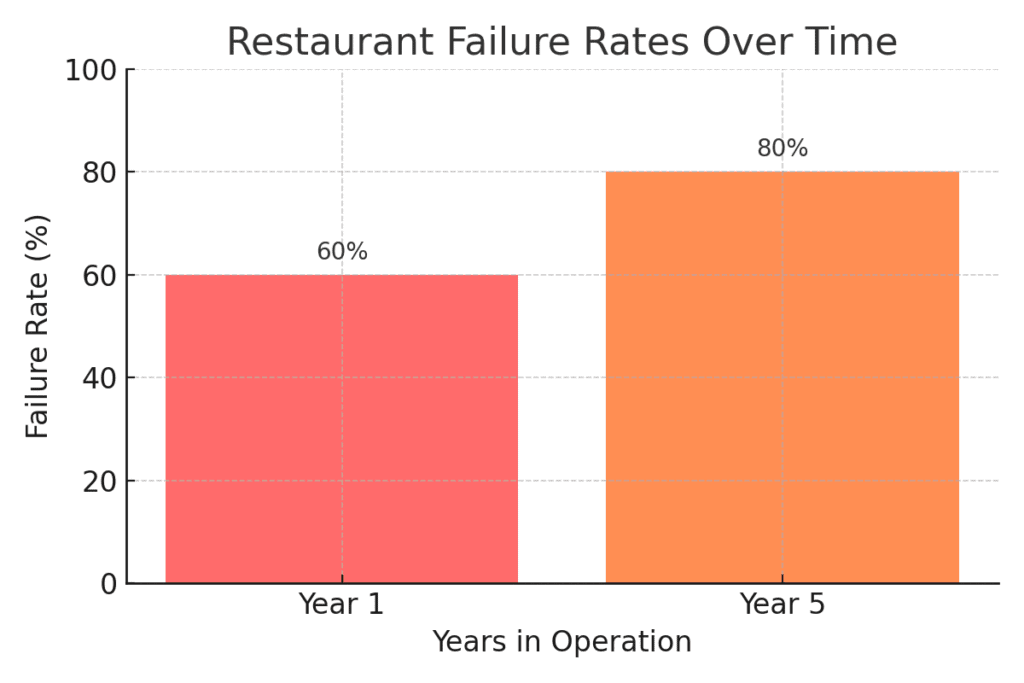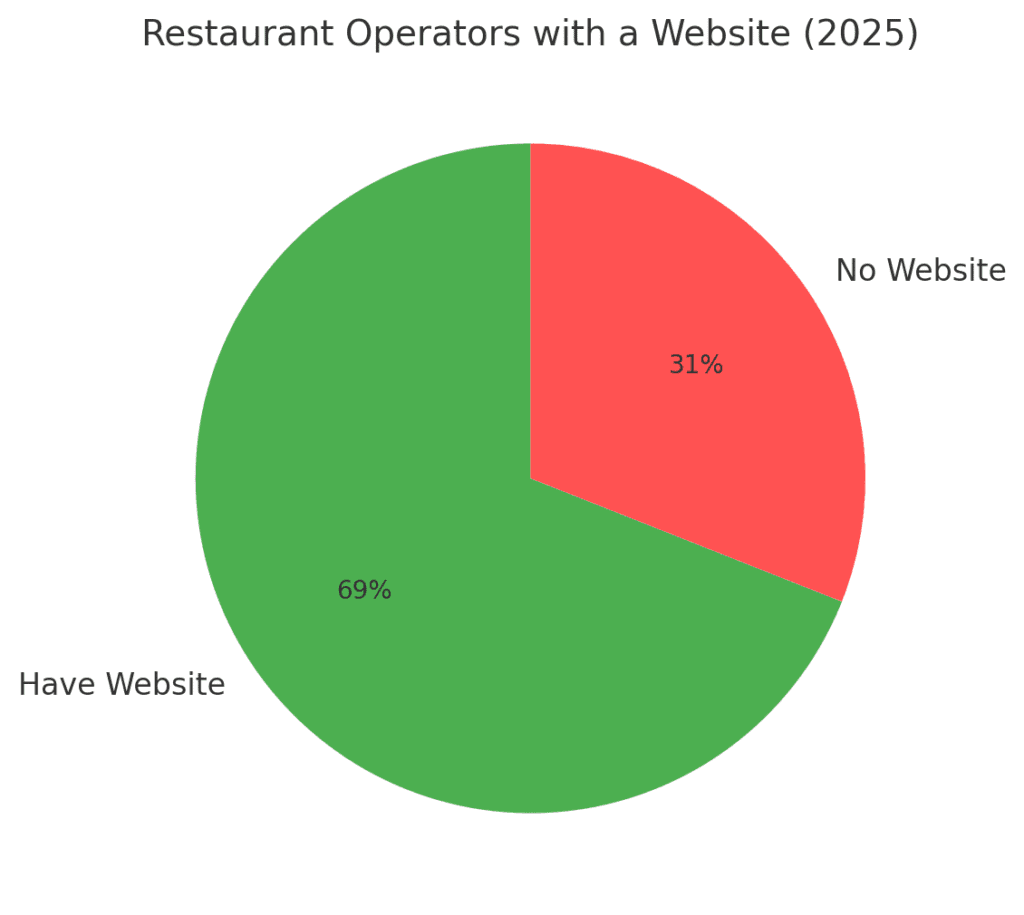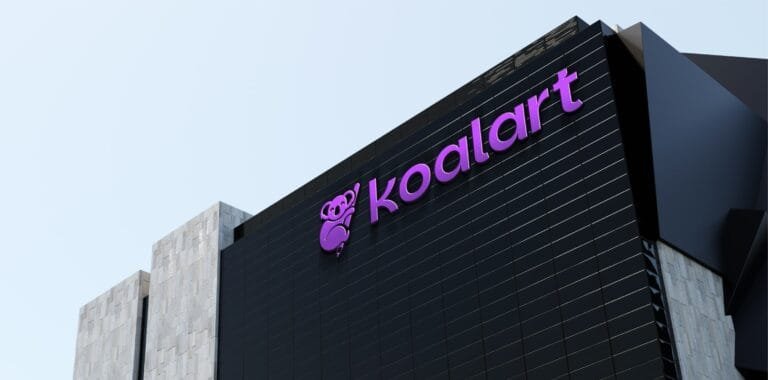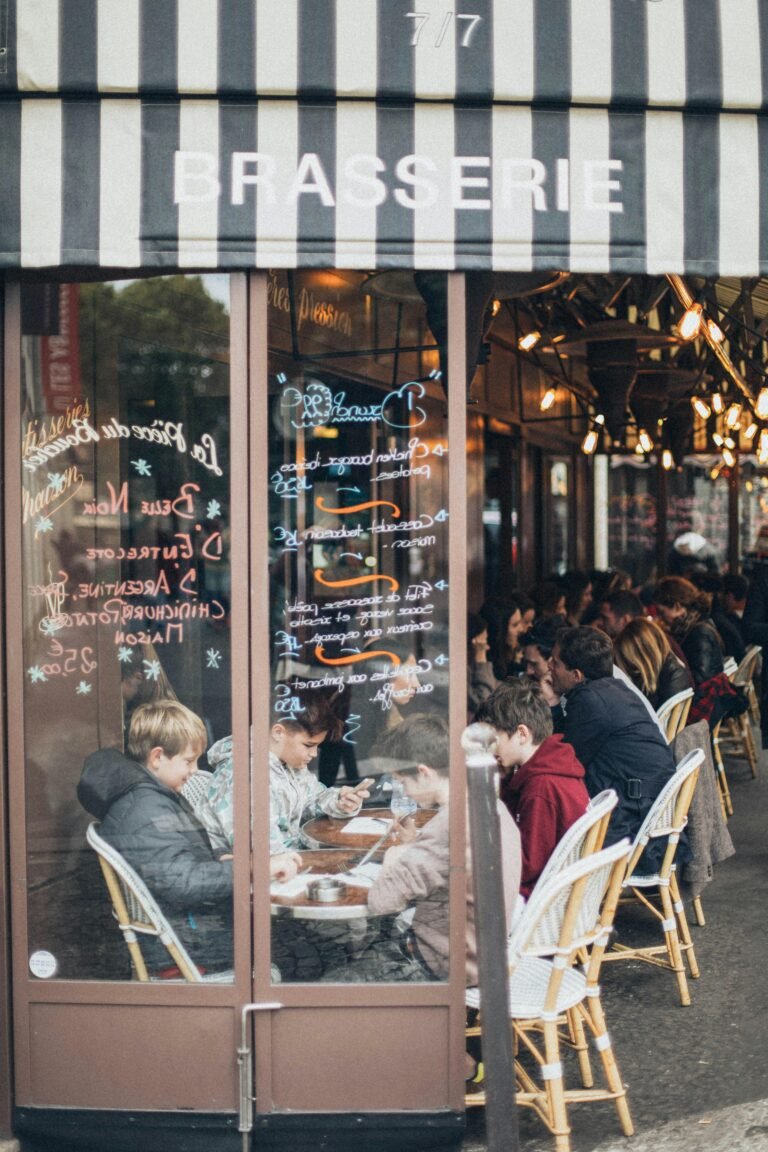What are Marketing Strategies for Restaurants
Running a successful restaurant isn’t just about great food, it’s about reaching the right customers with the right message. You as a restaurant owner must leverage digital and traditional marketing methods to stand out. In this guide, We’ll explore marketing strategies for restaurants that are proven to attract more customers, increase engagement, and grow business effectively.
Why You Need the Right Marketing Strategies for Your Restaurants

The restaurant industry is one of the most competitive sectors out there. With over 749,000 restaurants in the U.S alone (National Restaurant Association, 2023) and 10,608 new restaurants open a year (Restaurant Trend Report, 2023) , standing out from the crowd is no easy task. Whether you’re a cozy café, a fine dining establishment, or a trendy food truck, the challenge remains the same: attracting and retaining customers in a saturated market.
The Reality of Competition

- High Failure Rates: According to a study by Ohio State University, later published by CNBC, stated that 60% of restaurants fail within their first year, and 80% close within five years. The primary reason? Lack of effective marketing and customer engagement.
- Rising Customer Expectations: Today’s diners don’t just want great food, they want an experience. From Instagram-worthy dishes to seamless online ordering, customers expect more than ever before.
- Competition from Chains and Delivery Apps: Big chains and third-party delivery platforms like Uber Eats and DoorDash dominate the market, making it harder for small, independent restaurants to compete.
Stay Relevant in the Competition
To stay relevant, you also need to know what opportunities you can take for business continuity. These are some of our suggestions based on relevant data:

- The Importance of Website: You should immediately create and optimize your website because the data shows that 69% of operators have a website for their restaurant (State of Restaurants Report, 2025). If your website has a bad interface, slow loading, and inconsistent branding, your business will soon be overtaken by competitors.
- Optimizing Social Media: You should start optimizing your social media channels like Facebook and Instagram. According to data collected from Bluedot’s The State of What Feeds Us, Vol VII shows that 44% of Gen Z diners find your restaurant’s promotions and coupons on social media. When it comes to optimizing social media, engaging and attractive visuals are a must. Social media users get a lot of information on social media, only relevant and quality content can attract their attention.
By implementing the right marketing strategies for restaurants, you can turn problems and challenges into opportunities to attract more customers and grow your business.
10. Build a Strong Online Presence

Your website is your restaurant’s digital storefront. A well-designed, mobile-friendly site makes it easier for customers to find you, browse your menu, and place orders. Use website builders like Wix, Squarespace, or WordPress to create a professional-looking site without the need for coding. Here’s how to make it count:
- Create a Professional Website:
You don’t need coding skills to create a great website. Platforms like Wix, Squarespace, WordPress, or Shopify provide easy-to-use templates tailored for restaurants. Consider the following:- Wix – Best for drag-and-drop simplicity and design flexibility.
- Squarespace – Great for visually appealing, minimalist designs.
- WordPress – Ideal for advanced customization and SEO optimization.
- Shopify – Best for restaurants that sell merchandise or packaged food online.
- Optimize for Local SEO:
To ensure your restaurant appears in local searches, follow these SEO tips:- Use keywords like “Best Italian restaurant in [city]” or “top-rated sushi place near me” throughout your site.
- Add your restaurant’s name, address, and phone number (NAP) consistently.
- Embed Google Maps for easy location tracking.
- Optimize images with alt text that describes your dishes.
- Set Up Google My Business:
Setting up Google My Business (GMB) is essential for restaurants looking to increase their online visibility and attract local customers. A well-optimized GMB profile helps your restaurant show up in Google Search, Google Maps, and local listings, making it easier for potential customers to find you. Follow these steps to set up and optimize your Google My Business profile:- Go to Google My Business.
- Click “Manage Now” and sign in with your Google account.
- Search for your restaurant’s name. If it’s not listed, click “Add Your Business to Google”.
- Select your business category (e.g., “Italian Restaurant,” “Coffee Shop,” etc.).
- Enter your restaurant’s name, address, phone number, and website URL.
- Google will send you a verification code via mail, phone, or email. Follow the instructions to verify your listing.
Tips
- If you decide to use WordPress, you can integrate it with plugins such as Restaurant Reservations, Food Store (for online orders), WP Customer Reviews and Yoast SEO.
- Optimize your website with blog features because writing relevant articles is the best way to increase website visitors. You can write articles about “Low Calorie Food in Our Restaurant” or “Meet Our Chef: The Story Behind the Secret Recipe”.
- In today’s digital era, over 60% of Google searches come from mobile devices (Statista), and potential customers often look for restaurants on the go. Here’s why a mobile-friendly website is a must for your restaurant.
9. Leverage Social Media to Connect with Customers

Social media is a powerful tool for engaging with your audience and showcasing your restaurant’s personality, especially with the development of the digital world. Here’s how to make the most of it:
- Choose the Right Platforms:
Focus on Instagram, Facebook, and TikTok, where visual content thrives. - Maximize Social Media Content:
- Post Consistently:
Share food photos, behind-the-scenes videos, and customer testimonials 3-5 times per week to keep your audience engaged. - Use Hashtags:
Include relevant hashtags like #Foodie, #[City]Eats, and #[Cuisine]Lovers to reach a wider audience. - Run Contests:
Host giveaways like “Tag a friend to win a free meal” to boost engagement and attract new followers.
- Post Consistently:
Tips
- Collaborate with Influencers to Reach a Wider Audience. Influencers can help you reach a larger, targeted audience and build credibility.
- Run Targeted Ads to Attract New Customers, paid ads can help you reach potential customers who might not find you otherwise. Use Facebook, Instagram, or Google Ads to target your ideal audience.
8. Offer Loyalty and Referral Programs to Keep Customers Coming Back
Loyalty programs are a great way to reward repeat customers and encourage them to visit again, while referral programs are one of the most effective marketing strategies for restaurants that can be used to grow the business sustainably. Satisfied customer refers friends or family to your restaurant, that recommendation carries far more weight than any advertisement. Here’s how to set one up:
- Loyalty Programs:
- Choose a Platform:
Use apps like Loyverse or Stamp Me to manage your loyalty program. - Set Up Rewards:
Offer points for every purchase, redeemable for discounts or free items. - Promote the Program:
Advertise your loyalty program on receipts, social media, and in-store signage.
- Choose a Platform:
- Referral Programs:
- Choose Your Incentives:
A successful referral program rewards both the referrer and the referee. Consider these incentive options:- Discounts (e.g., “Get 10% off your next meal for every friend you refer”)
- Free items (e.g., “Refer a friend and get a free dessert or drink”)
- Loyalty points (if your restaurant has a loyalty program)
- Exclusive experiences (e.g., “Refer 5 friends and get a free chef’s special meal”)
- Decide on the Referral Methods:
Choose the best way for customers to refer friends. Some common methods include:- Digital referral codes (customers share a unique code with friends)
- Referral links via social media or email
- Printed referral cards for dine-in customers
- Mobile app-based referrals (if your restaurant has an app)
- Promote the Program:
Your referral program will only be effective if people know about it. Use various promotional strategies:- In-store signage (posters, table tents, and menus)
- Social media marketing (Instagram, Facebook, TikTok)
- Email marketing (send invitations to existing customers)
- Website pop-ups and banners
- Word of mouth from staff (train employees to promote the program)
- Choose Your Incentives:
Tips
- For loyalty programs, Toast is a great choice for restaurants that want seamless integration with their POS system, offering customizable rewards and a mobile-friendly interface.
- For referral programs, ReferralCandy simplifies the process by automating referrals and offering customizable incentives, making it a strong choice for restaurants with online ordering.
7. Host Events and Promotions to Create Buzz

In the competitive restaurant industry, standing out requires more than just great food—you need to create excitement and engagement. Hosting events and running promotions can generate buzz, attract new customers, and keep regulars coming back. Below is a guide on how to plan and execute successful restaurant events and promotions:
- Organize Themed Nights:
Host events like live music, trivia nights, or cooking classes to draw in crowds. - Offer Specials:
Create limited-time promotions like “Taco Tuesdays” or “Weekend Brunch Specials.” - Promote Your Events:
Advertise on social media, your website, and through email newsletters.
Tips
- Consider developing signature events that become synonymous with your brand. For instance, a pizzeria might host monthly “Dough Throwing Championships” where customers compete to stretch the perfect crust. A steakhouse could organize “Butcher’s Table” nights featuring whole-animal butchery demonstrations.
- Your social media strategy should include teaser content leading up to the event (like chef interviews or behind-the-scenes prep videos), live coverage during the event, and follow-up “thank you” posts featuring attendee photos.
6. Partner with Delivery Apps to Expand Your Reach
Partnering with food delivery apps are one of the most powerful marketing strategies for restaurants looking to expand their reach, increase sales, and attract new customers. With the growing demand for convenience, many consumers prefer to order food online rather than dine in. By integrating with popular delivery platforms, restaurants can tap into a larger customer base and stay competitive in an evolving industry. Here’s how to make the most of them:
- Sign Up for Platforms:
List your restaurant on Uber Eats, DoorDash, or Grubhub. - Offer Exclusive Deals:
Provide discounts for app users to attract new customers. - Include Promotional Materials:
Add flyers in delivery orders promoting your website or loyalty program.
Tips
- Not all delivery apps are the same—each has its own customer base, fee structures, and promotional opportunities. Research which platforms are most popular in your area. For example, DoorDash dominates in many suburban markets, while Uber Eats may perform better in urban centers. Consider signing up with multiple apps to diversify your reach but prioritize the ones that bring the most orders.
- Understanding the fee structure. Delivery apps typically charge restaurants a commission fee ranging from 15% to 30% per order. Some offer tiered plans (e.g., lower fees if you handle your own delivery drivers). Be aware of additional charges like marketing fees for appearing higher in search results. Crunch the numbers to ensure profitability—if the fees are too high, consider adjusting menu prices for delivery orders to offset costs.
- Sudden surges in delivery orders can overwhelm your kitchen. Use tablet stands to organize multiple delivery app devices in one place and avoid missed orders. Implement a system where delivery orders are integrated with dine-in and takeout tickets to maintain efficiency. If possible, designate a staff member to handle delivery orders exclusively during peak hours.
5. Encourage Customer Reviews to Build Trust
For restaurant owners, cultivating positive reviews isn’t just about vanity metrics—it’s about building authentic trust that converts browsers into diners and first-time visitors into regulars. Here’s your comprehensive playbook for developing an organic review strategy that enhances credibility and fuels growth:
- Creating a Review-Worthy Customer Experience:
Before asking for reviews, ensure your restaurant consistently delivers experiences worth writing about. This foundation separates sustainable review generation from hollow review solicitation. Train your staff to go beyond transactional service by:- Personalizing interactions (remembering regulars’ names and preferences).
- Creating Instagrammable moments (signature dish presentations or unique décor).
- Implementing a “wow factor” (complimentary amuse-bouche for first-time guests).
- Developing recovery protocols for when mistakes happen (a sincere apology with dessert on the house can turn a negative into a positive review).
- Respond to Feedback:
Responding to reviews demonstrates you value customer feedback and builds trust with potential diners reading them. Follow these response protocols:- For 5-star reviews:
- Go beyond “Thank you!” with specific callouts:
- “Maria, we’re thrilled you loved the truffle gnocchi! Chef sources those mushrooms locally every Thursday. Can’t wait to serve you again soon!”
- For 3-4 star reviews:
- Acknowledge and improve:
- “John, we appreciate your feedback about wait times. We’ve added more weekend staff to address this—hope you’ll give us another chance to impress you.”
- For 1-2 star reviews:
- Take the conversation offline quickly:
- “Sarah, we’re truly sorry your anniversary dinner didn’t meet expectations. Our manager would love to discuss how we can make it right—please email [address].”
- For 5-star reviews:
- Multi-Channel Review Generation:
Diversify your review portfolio across platforms to maximize visibility:- Google My Business (critical for local SEO).
- Yelp (still influential despite restaurant owner frustrations).
- Facebook (great for community-building).
- Industry-specific platforms (TheFork for European markets, Zomato in Asia).
Tips
- For takeout and delivery customers, include a personalized note with their order – perhaps signed by the chef or manager – with a QR code linking directly to your review platforms. This small touch transforms a transactional experience into something more memorable and review-worthy.
- For negative reviews (which are inevitable), implement a gold-standard response protocol. Train managers to respond promptly, professionally, and personally to all critical feedback.
4. Use Email Marketing to Stay Connected
Email marketing is a cost-effective way to keep your customers informed and engaged. Building a powerful email marketing strategy for your restaurant requires careful planning and execution. Here’s how to do it:
- Build a List:
Start by collecting customer emails through multiple touchpoints:- Train staff to politely request emails during reservations.
- Place a physical guest book at the host stand offering a free appetizer for signups.
- Create a prominent signup form on your website with clear benefits.
- Implement a pop-up that appears after visitors browse your menu.
- Choosing the Right Email Platform:
Select an email service provider that caters to restaurants:- Platforms like Mailchimp or Constant Contact offer F&B-specific templates.
- Look for automation features like birthday emails and customer segmentation.
- Ensure integration with your reservation system.
- Crafting Monthly Newsletters:
Include valuable content beyond promotions:- Seasonal menu highlights with behind-the-scenes content.
- Staff and chef spotlights.
- Local community events you’re involved in.
- Customer photo features.
- Occasional menu preference surveys.
Tips
- consider specialized restaurant CRM systems like SevenRooms or Toast that integrate email marketing with your POS data. These allow you to track which email recipients actually visit and what they order, enabling incredibly targeted follow-ups. For example, you can automatically send wine pairing suggestions to customers who frequently order steak, or dessert promotions to those who typically finish their meal early.
- Structure your newsletters using the “inverted pyramid” approach: Start with your most time-sensitive offer, followed by engaging content, ending with your call-to-action.
3. Invest in Professional Visuals
professional photography and videography aren’t just nice-to-haves – they’re essential marketing tools that can significantly impact your restaurant’s success. Research shows that posts with high-quality visuals receive 94% more views than text-only content (MDG Advertising). Here’s how to get started:
- Hire a Photographer:
Capture stunning images of your food, ambiance, and staff to use on your website and social media. - Create Engaging Content:
Hire graphic designers to create attractive social media, flyer and menu designs. - Post Videos:
Share short, engaging videos of food preparation or customer reactions on TikTok and Instagram Reels.
Tips
- Hire a food photographer who understands lighting, angles, and styling to make your dishes look irresistible.
- Graphic design agency can create branded templates for menus, social posts, and ads—saving you time while keeping your look polished.
2. Create a Memorable Brand to Stand Out (And Why Professional Design Matters)
In today’s crowded restaurant industry, your brand is your most valuable asset. It’s not just a logo or color scheme – it’s the entire experience customers associate with your business. Here’s why investing in professional graphic design and branding is crucial, and how to do it right:
- Develop a Strategic Brand Identity:
- A distinctive logo that reflects your cuisine and ambiance.
- A curated color palette (food-friendly colors increase appetite by 15%).
- Custom typography that matches your restaurant’s personality.
- Maintain Visual Consistency Across All Touchpoints:
- Menus (both physical and digital versions).
- Social media templates for consistent posting.
- Packaging and takeout materials.
- Signage and interior decor elements.
- Staff uniforms and merchandise.
- Craft a Compelling Brand Story:
Professional designers help articulate your unique selling points- Heritage (“Family recipes since 1985”).
- Chef’s philosophy (“Farm-to-table ingredients”).
- Cultural inspiration (“Authentic Neapolitan techniques”).
- Visual storytelling through custom illustrations or photography style.
Tips
- Your logo serves as the cornerstone of your visual identity, and its creation deserves professional attention. Unlike generic logo generators, experienced restaurant designers understand how to incorporate subtle culinary cues while maintaining versatility across applications. They’ll create a mark that works equally well on a tiny mobile screen as it does on large exterior signage.
- Color selection in restaurant branding requires particular expertise. Professional designers know that certain hues stimulate appetite (think warm reds and oranges) while others convey specific culinary traditions (like deep greens for Mediterranean concepts). They’ll develop a palette that not only looks appealing but psychologically supports your positioning.
- Typography plays an equally vital role in restaurant branding. The fonts you choose communicate volumes before customers read a single word of your menu. A classic French bistro might employ elegant serif fonts, while a modern fusion concept could opt for sleek sans-serifs with unexpected flourishes.
1. Monitor and Adjust Your Marketing Strategies for Restaurants
After implementing all the powerful marketing strategies for restaurants we’ve covered – from building your online presence to crafting a memorable brand – there’s one final component that separates thriving restaurants from struggling ones: the disciplined practice of monitoring, analyzing, and continuously optimizing your marketing efforts. This ongoing process ensures every dollar and hour you invest delivers maximum returns.
- Establish Key Performance Indicators (KPIs):
Identify which metrics truly matter for your specific goals:- Customer Acquisition: Website traffic sources, cost per lead, reservation conversion rates.
- Engagement: Social media interaction rates, email open/click-through rates.
- Revenue Impact: Average order value, customer lifetime value, ROI per channel.
- Operational Metrics: Table turnover rates, peak hour conversions.
- Implement Tracking Infrastructure:
- Google Analytics 4 for website behavior analysis.
- UTM parameters for all digital campaigns.
- POS system integration with marketing data.
- Customer relationship management (CRM) software to track guest journeys.
Tips
- Your staff are the living embodiment of your brand, and investing in their development pays dividends. Move beyond basic training manuals and create immersive onboarding experiences that help new hires understand not just how to perform their jobs, but why your restaurant exists.
- Collaborating with complementary businesses can be a powerful way to expand your reach without significant marketing spend. Partner with local wineries for special pairing dinners, or team up with nearby theaters to offer pre-show dining packages. These partnerships should be mutually beneficial and authentic to your brand.
Final Thoughts on the Marketing Strategies for Restaurants
Marketing your restaurant doesn’t have to be overwhelming or expensive. By implementing these proven marketing strategies for restaurants, you can attract more customers, build a strong brand, and grow your business. From creating a professional website and leveraging social media to offering loyalty programs and hosting events, there are plenty of ways to stand out in a competitive market.
Remember, consistency is key. Whether it’s posting on social media, engaging with customers, or monitoring your marketing efforts, staying committed to your strategy will yield results over time. If you need help with branding or design, consider partnering with experts like Koalart Creative, who specialize in creating visually stunning and impactful designs tailored to your business needs.
Ready to take your restaurant to the next level? Start implementing these tips today and watch your customer base grow!




